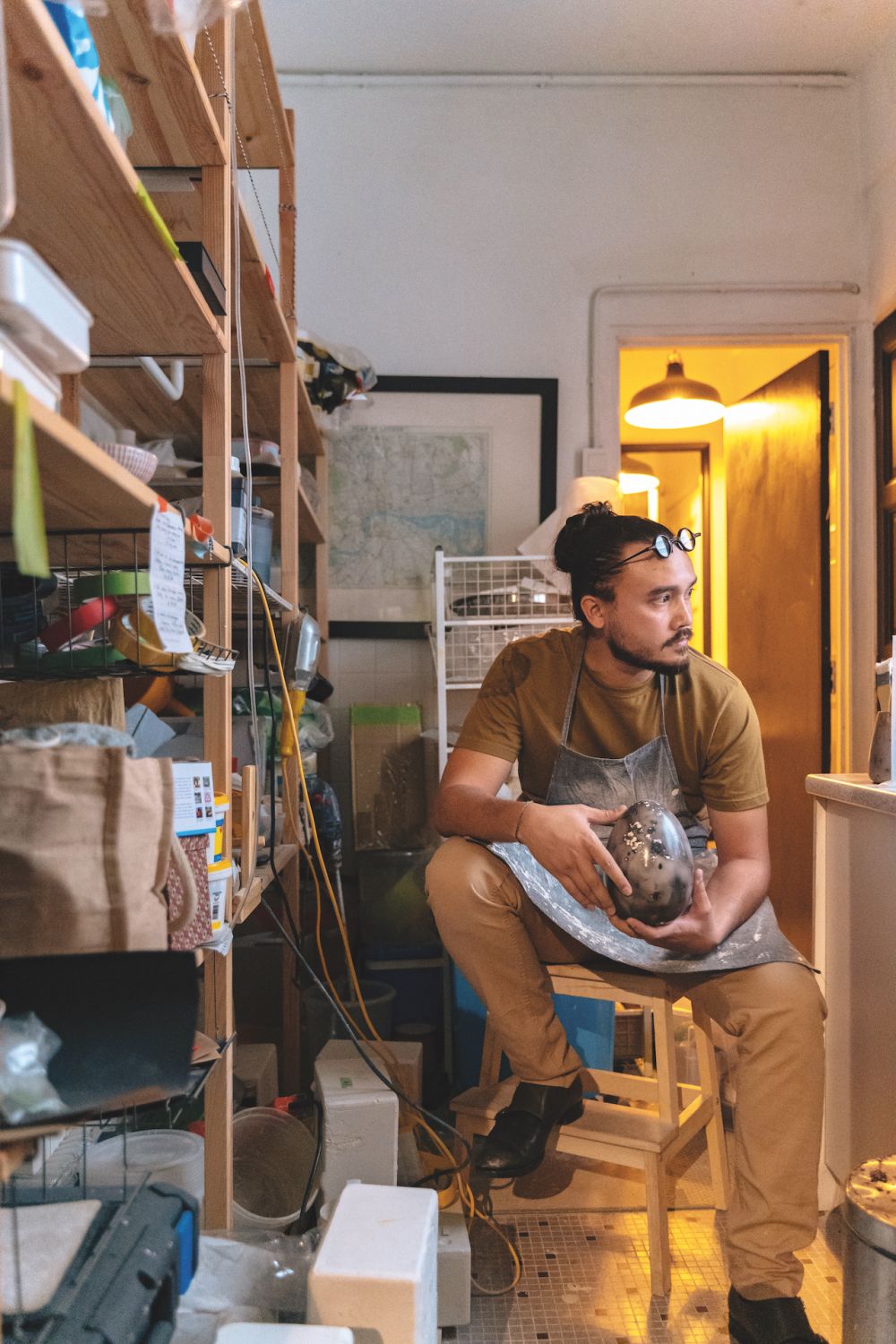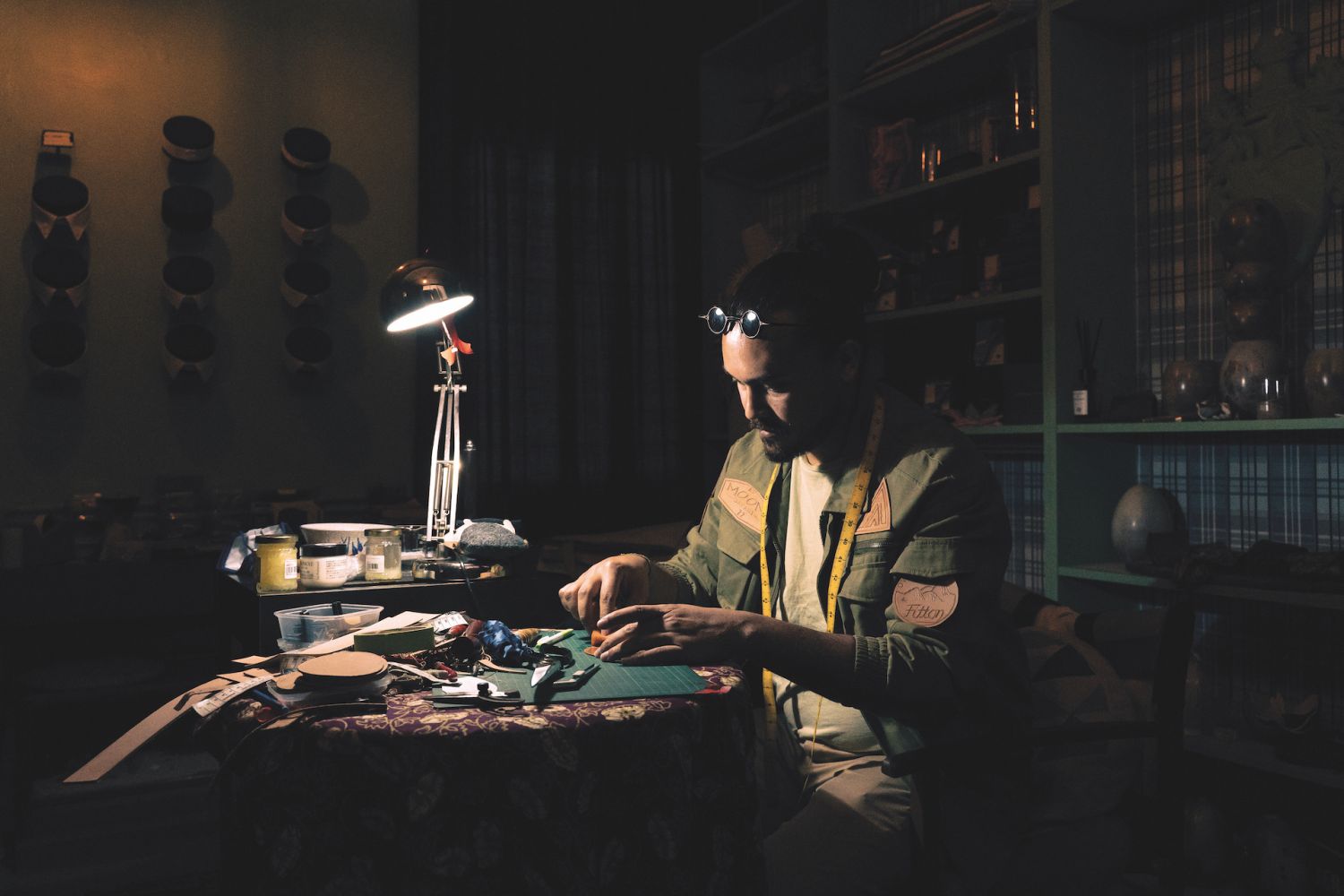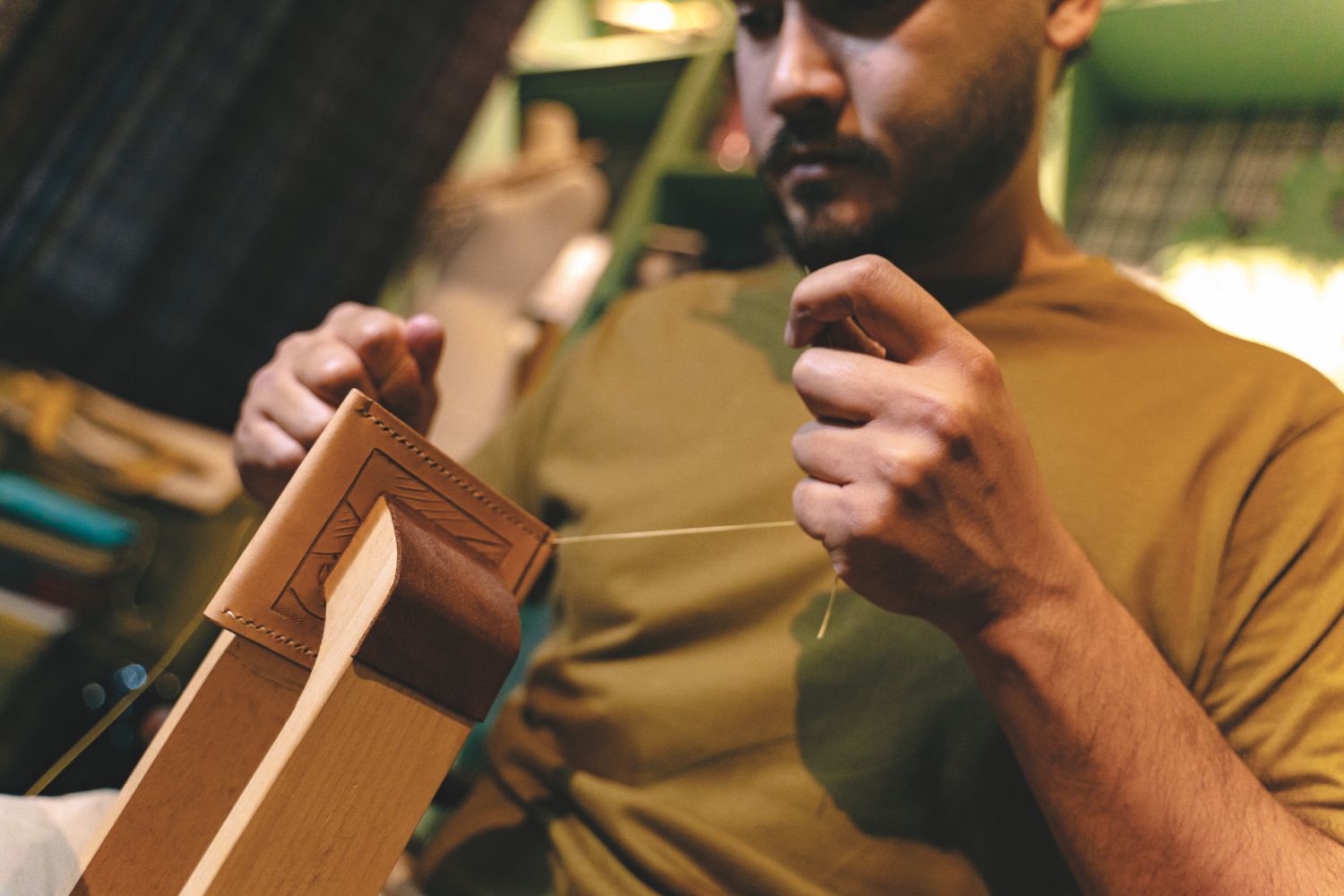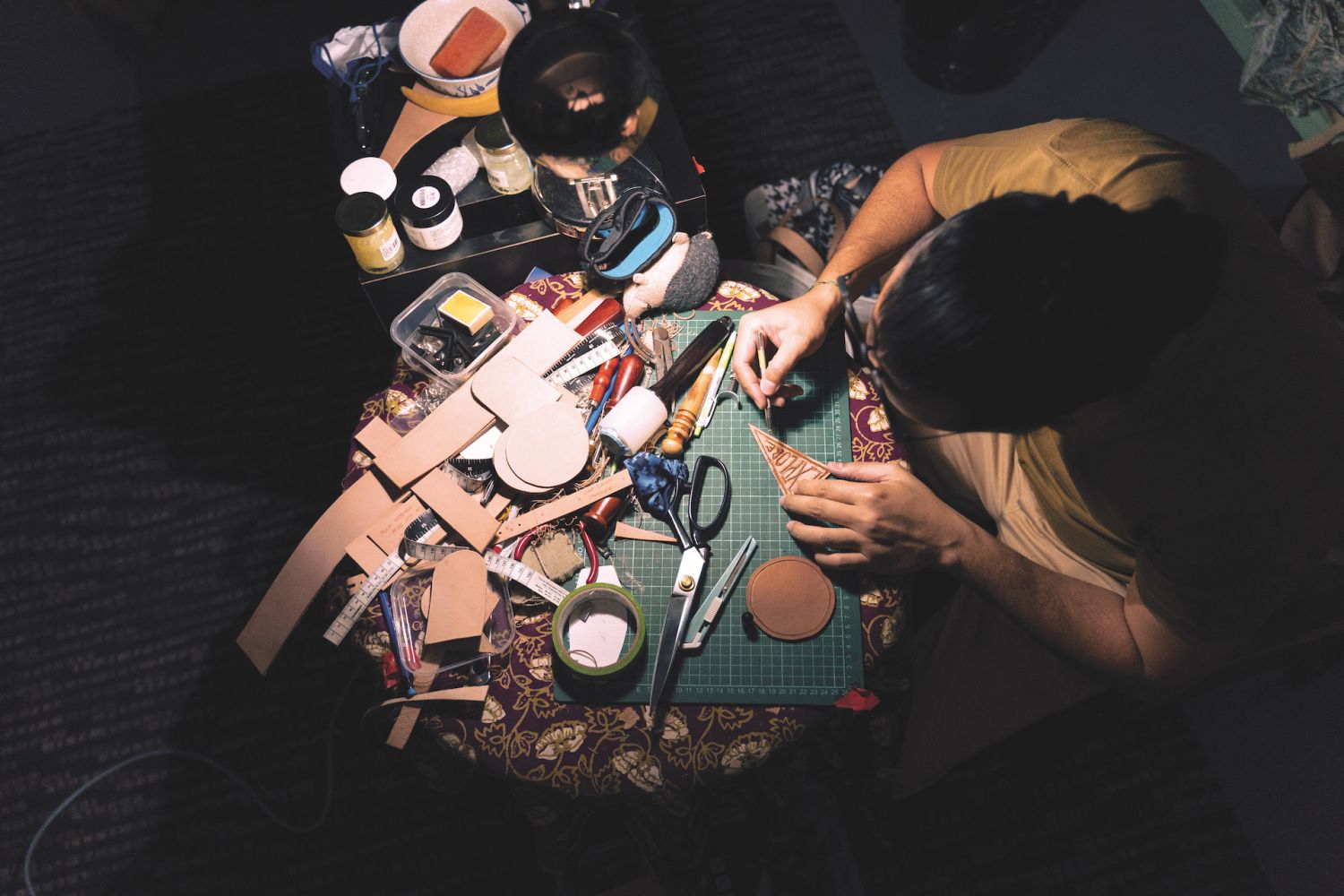Architecture, fashion design, tailoring, leather-carving, ceramic art—Joshua Fitton doesn’t sit on his laurels
Over the years, there has always been one constant in Joshua Fitton’s menswear collections: a man trying to find his place in the world—or a place where he can belong. No matter the theme, the story is always about a man who goes through different phases in his life; a voyager at sea, both in his inner and outer worlds.
For his latest collection, Moon Safari, Fitton forgoes his usual repertoire of tailored suits, putting emphasis on the textures and moods of different textiles instead, including many intricately hand-carved leather patches.
“It’s not about an actual location that you can go to,” explains Fitton. “I wanted the collection to be a journey from within, rather than a physical one where you have to go somewhere. While I have featured safari-themed stuff before, it was always about the physical exploration and adaptation to new places: about someone trying to find an actual space where they can fit in and belong. This time, though, I wanted it to be an exploration into one’s internal psyche.”
See also: The Zhongshan Building and Its Vibrant, Diverse Creatives

But when it comes to the fast-paced world of fashion, the story behind a designer’s collection doesn’t always translate to suitability for the market. Fitton himself acknowledges this, and says that for the viewer, the wearer, and the buyer, when it comes to fashion or other artworks, it isn't so much about the story, but how the clothes look on them or how much they resonate with the piece.
See also: Asia’s Most Stylish Men Embody Individuality and Expression
“That’s the beauty of it actually,” he says. “Sometimes art can be for art’s sake. It doesn’t have to be deep. It can be any kind of clothing or any kind of art, so long as it makes you feel a certain way. It will only appeal to you if you relate to it or feel good about it. People don’t often buy the art for the story’s sake—if anything, it’s because they see themselves in the work that they buy."
His first solo exhibition, What Dreams May Come, was inspired by the collective ‘lives’ led by a singular person; comprising 100 ceramic eggs, each with their own patterns and created with varying techniques, they represented lives led, dreams had, and lives one wished to have led.


